petemaxfield@hotmail.com
PICTURES BELOW THE TEXT:-
The following letter was written Sept. 13, 1916, by Canadian soldier Hart Leech from Winnipeg shortly before he died in battle.
It was lost in his belongings when he died and wasn’t read by his mother Ida until 12 years later in 1928. Leech served as a lieutenant in the 61st Battalion and 1st C.M.R.
Along with being recognized for his military skills, he was known for his baritone singing voice.
"Dear Mother
Just a wee note. I am "going over the parapet", and the chances of a "sub" getting back alive are abut nix. If I do get back, why you can give me the horse laugh. If not this'll let you know that I kicked out with my boots on.
So, cheer up, old dear, and don't let the newspapers use you as material for a Saturday magazine feature. You know the kind: where the "sweet-faced, grey-haired, little mother, clutching the last letter from her boy to her breast, sobbed, “’He was such a fine lad,' as she furtively brushed the glistening tears from her eyes with a dish rag, etc. etc."
I’m going to tell you this in case my company commander forgets. Your son is a soldier, and a dog-gone good one, too, if he does say it himself as shouldn't. And if he gets pipped it'll be doing his blooming job.
In a way it's darned funny. All the gang are writing post mortem letters and kind of half ashamed of themselves for doing it. As one of our officers said: "If I mail it and come through the show, I'll be a joke. If I tear it up and get killed I'll be sorry I didn't send it." S'there y'are..." (Daryl G Hudson post on Facebook World War One page)
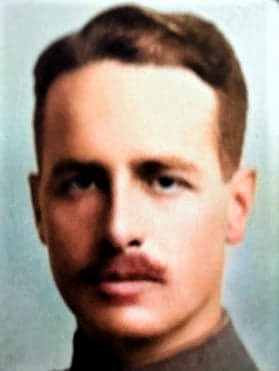
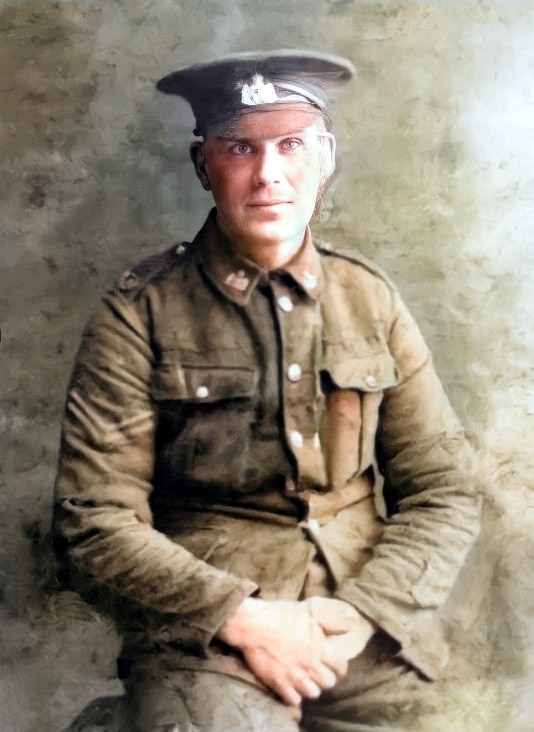
Herbert Irving Stevenson (1878-1943) Forester. Born at Richibucto, New Brunswick on 17 July 1878, son of John Stevenson, he enlisted as a private in the Royal Canadian Dragoons and served in the Boer War in South Africa, earning the Queen’s medal with five clasps. On his return he worked as a naval architect at Baltimore, Maryland then came to western Canada in 1903, first working on a farm west of Brandon then managing the Brandon Laundry, later working for the Hanbury Lumber Company in lumbering operations in the Duck Mountains. On 18 September 1909 he married Mary Bernice Donaldson at Brandon. They had four daughters and two sons. He was a member of the AF & AM (Assiniboine Lodge) and the Scientific Club of Winnipeg. He was a Director of the Dominion Envelope and Cartons Limited. In 1912 he began working for the Dominion Forestry Service and devoted the rest of his life to forestry. During the First World War he went overseas in command of the First Canadian Mounted Rifles, transferring to the Fort Garry Horse. He was awarded the Distinguished Service Order and two bars for distinguished conduct in the field. On his return to Canada he resumed his forestry duties and eventually rose to be director of the department in Manitoba. When the federal government transferred natural resources to the province in 1930 he was appointed provincial director, a post he occupied until retirement in June 1942. He was soon brought out of retirement by the government and anticipated carrying on to the end of the Second World War. He died at Winnipeg on 1 September 1943 and was buried in Brandon Cemetery.
THE MANITOBA Government Services, the Forest Industries and the Forestry Profession in Canada has suffered a severe loss in the sudden death, on September 2, of Colonel Herbert Irving Stevenson, D.S.O. and bar, Director of Forestry in th~ Department of Natural Resources of Manitoba, at the age of sixty.five. He had been operated upon for an abdominal complaint about three weeks earlier and was making a most sat& factory recovery. Death came suddenly and was attributed to a blood clot. Colonel Stevenson was the son of John and Mary Stevenson of Richibucto, N.B. Born at Richibucto on June 13, 1878, he completed Grammar School at that point in 1897 and entered Normal School at Fredericton, N.B., gradue ating from there the following year. In 1910 he married Miss Mary Bernice Donaldson of Brandon, Mania toba. Besides his widow Colonel Stevenson is survived by three brothers, Air Vice-Marshal L. F. Stevenson, Air Officer Commanding, Western Air Come mand; Harry, at Rosetown, Sask., Ernest, at Regina Beach, Sask.; one sister, Mrs. Arthur Lockley, Hamilton, Ont.; four daughters, Flight Officer Marjorie Briese, R.C.A.F., Ottawa; Mrs. V. R. Stammers, Hamilton, Ont.; Mrs. F. A. DeLisle, Vancouver Island, Miss Katherine Stevenson, Arvida, Quebec; and two sons, Lieut. H. J. Stevenson, Royal Canadian Engineers, overseas; and John D., attending medical college at Winnipeg. Colonel Stevensoil had a distinguished military career. At the age of 21 he enlisted as a private in the Royal Canadian Dragoons for service in the South African war. After the close of that war he took a very active interest in the Canadian Militia and on the outbreak of World War I he organized the First Canadian Mounted Rifles which he accompanied overseas as their Colonel. Afterwards, he was transferred to the Fort Garry Horse which unit he later commanded, succeeding General R. W. Patterson. The Colonel spent four years on active service in France and was twice mentioned in dispatches. The following medals were awarded to him for military sere vice: Queen's medal, with five clasps (South African war); Distinguished Service Order, with two bars; French Croix de Guerre, with ~alm; 1917 Star; Victory medal; and General Service medal. Viscount Willingdon while GovernorGeneral of Canada, 1926.3 1, appointed Colonel Stevenson one of his aides.de.camp. Colonel Stevcnson was an Active Member of the Canadian Society of Forest Engineers and a Member of the Empire Forestry Association. His association with the forestry profession began in 1912 when he was appoint* ed by the Dominion Government as supervisor of the Riding Mountain Forest Reserve with headquarters at Roblin, Manitoba. After his return from France in 1919 he was appointed Assistant District Forest Inspector with headquarters at Winnipeg. In 1923 he was appointed to the position of District Forest Inspector from which position he was retired when the natural resources were transferred to the Western provinces in 1930. His services The Forestry Chronicle Downloaded from pubs.cif-ifc.org by 81.153.43.159 on 02/19/18 For personal use only. 238 FORESTRY CHRONICLE were immediately solicited by the Manitoba Government who appointed him Director of Forests for that province. He organized the Manitoba Forest Service and the Manitoba Air Service. Last June, Colonel Stevenson, having reached the age of 65 years, was due for retirement, but was requested by the Provincial Government to continue in office. The Colonel was always active in Society affairs and his genial manner and sound advice will be missed at the annual meetings. His sudden death is a great loss to the cause of forestry in Canada and the proviilce of Mani. toba in particular. He died at Winnipeg on 1 September 1943 and was buried in Brandon Cemetery. https://www.findagrave.com/memorial/144394097/herbert-irving-stevenson#view-photo=131231131
Fort Garry Horse.
He led his regiment with great gallantry and
determination'duringthe advance from Mametz
to Le Cateau on October 9th, 1918. He
directed the operations from most advanced
positions under heavv shell and machine-gun
fire and showed a total disregard for all danger.
The capture of the Bois de Gattigny was
entirely due to this officer's initiative, fine
leading, and had a most important bearing
on the subsequent advance. His conduct
throughout the operations -was splendid, and
he set an inspiring example to his regiment.
(D.S.O. gazetted 22nd June, 1918.)
Commanded the Canadian Brigade Detachment, in Mounted Detachment in 3rd Cavalry Division, during the Actions of 23, 24, 25, 26 and 27 March 1918. At VILLESELVE, after the Infantry line had been broken, he led the mounted attack, around the right flank of the village, drove the enemy back and organised a new line from the NE edge of the village, to the left flank of the French position in BOIS DE REINE. He held this line until reinforced by reorganised British Infantry, and later covered the retirement of the Infantry, on BERLANCOURT. His splendid dash and cool leadership, undoubtedly save the rout and enabled two Infantry Battalions, who had been off near CUGNY, to get back to our lines. At GUY, he organised the rear lines of defence, covering the retirement of the 2nd and 3rd Cavalry Divisions, and enabled the men and horses to withdraw safely. He commanded the Brigade Party, in the attack on BOIS-DES-ESSARTS.
Bar to DISTINGUISHED SERVICE ORDER
Lt.-Col. Herbert Irving Stevenson,. Cav.
For conspicuous gallantry and devotion toduty.
When our line was temporarily
pierced, he led a charge with great skill and
dash, by which the "enemy were driven back
and a new line established. He succeeded
in establishing communication with the
troops on his right nank, and though
heavily outnumbered maintained this line
until relieved by fresh infantry unite. His
prompt action and cool leadership were the
means of allowing two battalions of infantry,
who were in danger of being out off, 'to
withdraw safely to our line.
https://www.findagrave.com/memorial/144394097/herbert-irving-stevenson
Stevenson, QSA, below: while with the XII Manitoba Dragoons
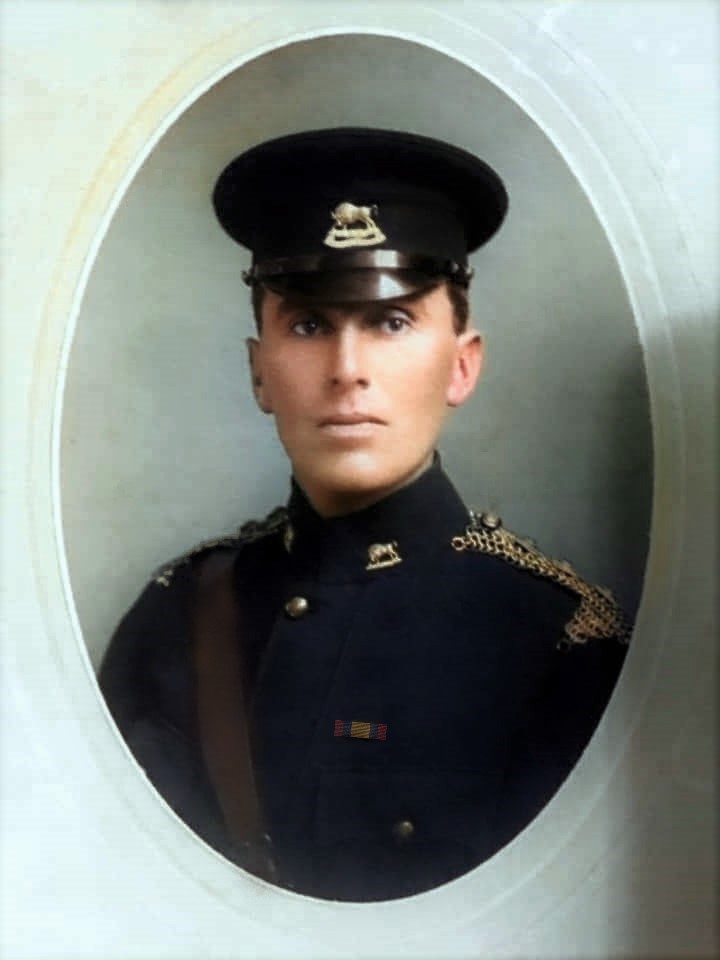
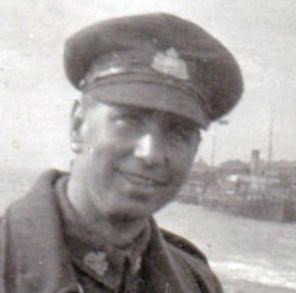
Private George McKie, #135537 1st Canadian Mounted Rifles George McKie was my grandfather. I am his namesake, never having met him, as he died in 1923. George was born in Ayrshire, Scotland August 12, 1893. He immigrated to Canada in June of 1912, following one of his older brothers, Robert, who came to Canada in 1909. On board ship, he met the love of his life, Margaret Kirkaldy. They were married two years later, on August 5th, 1914 in Toronto. And so began a rather nomadic life of moving from house to house in Toronto, trying to find affordable accommodation. In July of 1915, George completed Attestation papers, joining the 74th Overseas Battalion. His training took him to Niagara on the Lake, completing his basic training on the Common just outside of Fort George. In June of 1916, George received orders to sail overseas with his draft of fellow 74th Battalion members. Immediately upon arrival in England, the unit was broken up with its members being drafted into other Battalions for service at the front. George’s transfer had him going at one point to the 51st Battalion, but that was crossed out and the 1st C.M.R. written in. It is unknown whether any of his mates went with him. George arrived in France and joined the 1st C.M.R. on Sunday June 16th, 1916. The unit was re-equipping and re-arming after some horrendous losses at Mount-Sorrel. George served continuously with the 1st C.M.R. His service records show that the 1st was in all the major battles through 1916, including the Somme, and with the rest of the Canadian Corps at Vimy Ridge in April, 1917. He missed out (luckily one might presume) at Passchendaele, as he was in England, and presumably Scotland on leave, in November 1917. Jumping ahead into 1918, my grandfather was present at all the actions the 1st C.M.R. fought in. Amiens in July, Arras in August and the push to the Canal du Nord. By mid-September, elements of the 1st C.M.R. had reached the area of the Canal. Night raids for prisoners and recce were very common. While there are no records of the action available to me, on the night of September 13, 1918, George went out on one of two reconnaissance patrols. One was led by a Lt. McRae and Sgt. Jebson of B Company in the area just to the west of the Canal du Nord near a little village called Sauchy Cauchy. There was a brick kiln there and its chimney was a wonderful place for an O.P. and the works itself a minor strong-point. That night several actions took place with the Germans as the Canadians worked to find points at which the Canal could be crossed. While the actual citation has long since disappeared, my grandfather, as well as Sgt. Jebson and a number of others on that patrol were awarded Military Medals for their actions that night. On September 30th, 1918, while approaching Cambrai, George was wounded. Variously described by different doctors as a gun-shot wound, or a shell splinter. I tend to think it was the latter. It was enough to take him out of the line, though, and posted to a hospital unit. There he spent the rest of the war. The wound itself was not that serious, but by early October, the writing was on the wall and the end of the war was not far off it seemed. November 11, 1918 saw George still recovering and shortly thereafter he was homeward bound for Canada. He was discharged in Toronto mid-January, 1919, returning home to the love of his life Margaret, and their daughter Bess, who was born in July 1916, about a month after he arrived in France. George and Margaret went on to have three more children, all boys, but George’s health was compromised by his time in the trenches. There is no information as to whether George was able to return successfully back to work after his time in the C.E.F. In July of 1923, he was admitted to Toronto General Hospital, suffering from peritonitis. Despite surgery, he died in hospital on July 28th, 1923 aged 29 years, some two days after his youngest son George-my father-was born.
From George McKie: Attachment is a photo of my grandfather's shadow box. Features a photo of him and a replica of the Military Medal won and the original order from Gen. Rawlinson including his name. Unfortunately the cell phone camera doesn't show the resolution necessary to see that. At the top left is his name but with identification with the 74th Batallion.

Christine Hankinson has sent a couple of photos:
My great uncle Joseph Sexton was in the Ist Canadian Mounted Rifles, he died in France on 20th December 1916. His sister, my gran, lived with us as I grew up and with tears she used to tell me of her only beloved brother. The story is dramatic. They were brought up in Lambeth in London and had a secure home until Joseph was about ten when an unspoken of family tragedy occurred and he was placed in a boarding school for boys and his younger sisters were sent to a girls boarding school. Then probably at 15, under the auspices of Dr Barnardos, he was sent to Canada to work in Canada, as many homeless London children were, I have no idea where. All I do know was that he joined the First Canadian Mounted Rifles and was sent to the Front. On their way to France the Regiment stopped off in London and in a photo studio in Oxford Street my gran (Florence E. Sexton) was photographed in his uniform. She was 21. He was killed in action on 20th December 1916 in France. He was 26. I attach the photo of my nan in her brothers uniform. My mother was born 8 months and a day after his death.

106054 Lt. John Keith Alexander M.M. (b. 27th September 1888 in Wick, Scotland) - Tom Van Walleghem has been researching, and is fairly sure that Corporal (Acting Sergeant) Alexander won the MIlitary Medal at Vimy Ridge - he was Gazetted on July 9th 1917, as were most of the awards for Vimy. Photo shows him commissioned as a Lieutenant with MM ribbon.
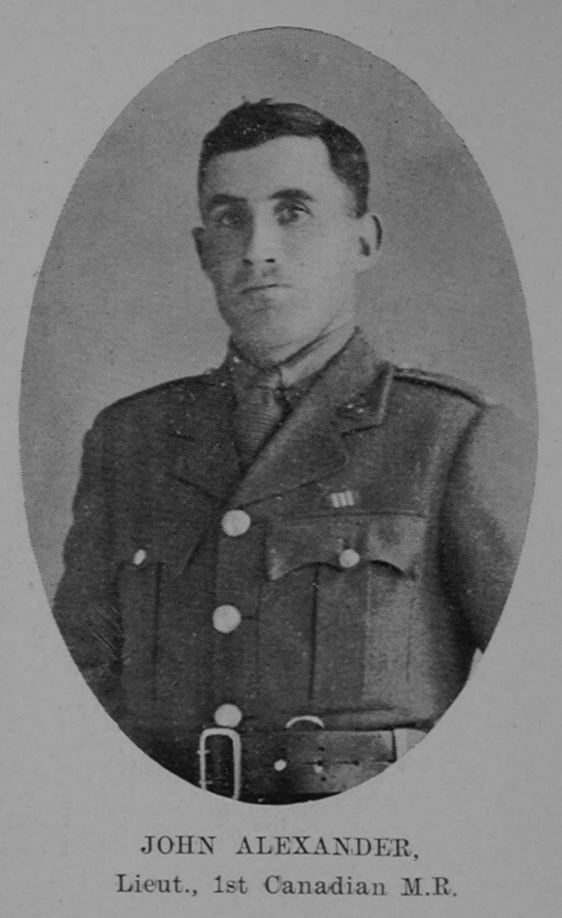
Death or Deliverance: Canadian Courts Martial in the Great War. By Theresa Iacobelli.
Page 83: "...On 21 OCTOBER 1917, George Raymond Reed of the 1st Canadian Mounted Rifles absented himself in the vicinity of Vlamertinge, Belgium, while his unit was moving to the forward area at Ypres. Reed remained missing until he was apprehended by military police in January 1918. Once captured, he offered little to explain his absence, stating that he had become separated from his battalion while enemy bombs were dropping and, unable to find them, opted to spend a night at the YMCA and wait for his battalion to come out of the line. He failed to offer an explanation for the length of his absence. For this crime, Reed was awarded a sentence of death by a military court martial in February 1918. In spite of this clear case of desertion, Reed's commanding officer, Lieutenant Colonel R.C. Andros of the 1st Canadian Mounted Rifles, wrote passionately in Reed's defence:
I would recommend that the sentence of FGCM of Death passed upon the said soldier, be commuted. My reasons for so doing are that, this man is only 19½ years of age and previous to this date he had always conducted himself, both in the line, and out in a soldierly manner. He has been continuously with this Battalion since June, 1916, and has been through the different engagements taken part in by this Battalion since then, and I have no complaints of his conduct. I consider that this crime was committed while under the influence of drink and that the accused on finding that he had been left behind became panicky, owing to his youthfulness and the bad advice given him by persons that he happened to be with at the time.
Based on the letters of Andros and two more commanding officers, Reed's death sentence was commuted to five years penal servitude [probably free to rejoin his unit within six months]. Reed survived the war and was demobilized on 28 MARCH 1919. In pleading on behalf of an errant soldier, Andros was not unique among his contemporaries. Letters of recommendation were a guilty soldier's best chance of avoiding confirmation of the death penalty. These letters from the corps, division, and battalion leaders were an extremely important factor in the confirmation or commutation of a death sentence. Fortunately for convicted soldiers, in the majority of cases, these letters lobbied for commuting death sentences and affording soldiers a second chance at honourable duty..."
[On the 21st October they were moving up for the attack at Passchendaele]
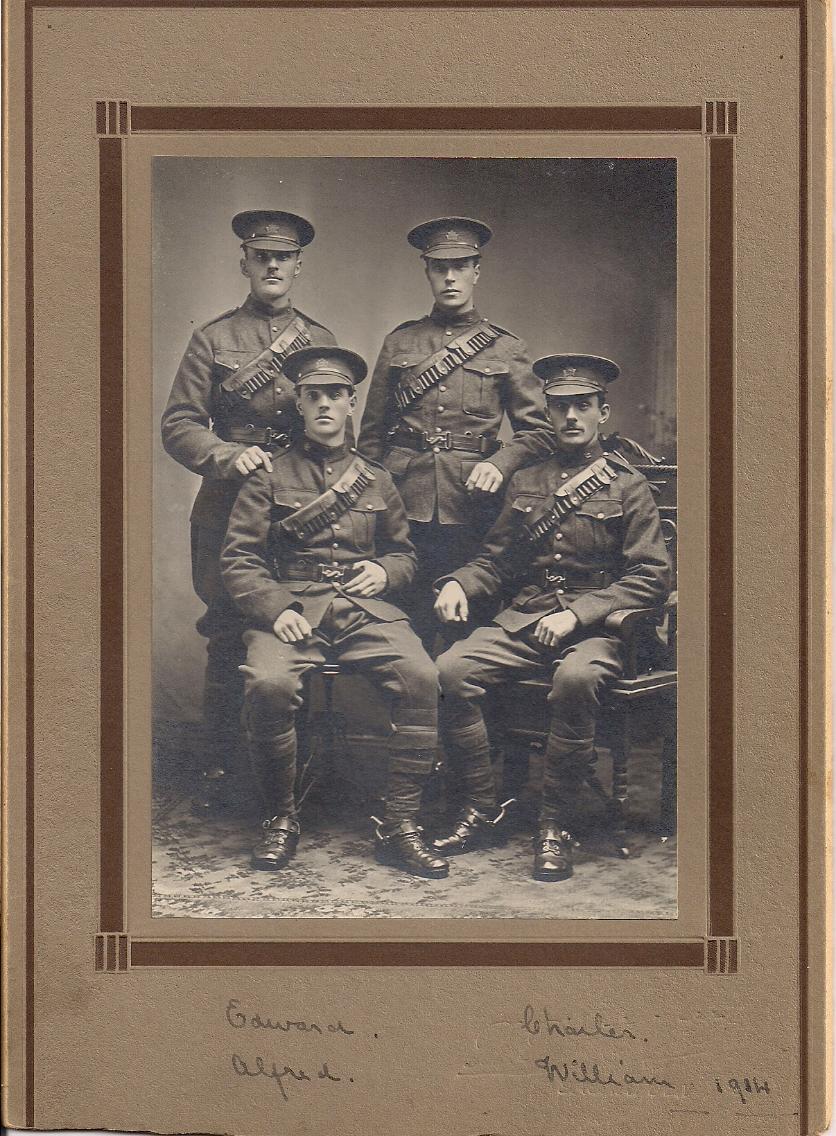
In Kultured Kaptivity, Life and Death in Germany's Prison Camps and Hospitals
by Ivan Rossiter of the First and Third Mounted Rifles,(CEF). Dated 1918.
The story of a Canadian Prisoner-of-War in Germany.
From the American Libraries Internet Archive.
http://archive.org/stream/inkulturedkaptiv00rossrich#page/n7/mode/2up
Excellent 1st and 2nd Chapters leading up to his capture at Sanctuary Wood on June 2nd 1916.

"The most decorated war hero in the history of Canada, the British Empire, and the Commonwealth of Nations." 106074 Trooper William George Barker (3 November 1894 – 12 March 1930).
Barker was a Colt machine gunner with the Machine Gun Section of the 1st Canadian Mounted Rifles until late February or early March 1916, when he transferred as a probationary observer to 9 Squadron of the Royal Flying Corps, flying in the BE-2. Barker's personal Sopwith Camel, B6313, became the most successful fighter aircraft in the history of the RAF, having used it to shoot down 46 aircraft and balloons from September 1917 to September 1918, for a total of 404 operational flying hours.
He was awarded the Victoria Cross for his actions on Sunday, 27th October 1918.
Flying Sopwith Snipe E8102 he crossed enemy lines at 21,000 feet above the Forêt de Mormal. He attacked an enemy Rumpler two-seater which broke up, the pilot escaping by parachute; (the aircraft was of FAA 227, Observer Lt Oskar Wattenburg killed). By his own admission, he was careless and was bounced by a formation of Fokker D.VII's of Jagdgruppe 12, consisting of Jasta 24 and Jasta 44. In a descending battle against 15 or more enemy machines, Barker was wounded twice in the legs, then his left elbow was blown away, yet he managed to control his Snipe and shoot down or drive down three more enemy aircraft (Two German pilot casualties were Lt. Hinky of Jasta 44, wounded; and Vfw. Alfons Schymik of Jasta 24, killed). The dogfight took place immediately above the lines of the Canadian Corps. Severely wounded and bleeding profusely, Barker force landed inside Allied lines, his life being saved by the men of an RAF Kite Balloon Section, who transported him to a field dressing station.
http://www.army.mod.uk/firstworldwarresources/archives/675/major-william-barker-in-a-sopwith-camel-1917
Photo below courtesy of 'Monado', on flickr.
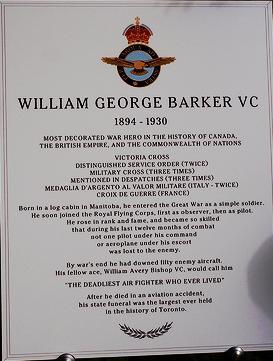
Below: 7774 Private Arthur Henry Harman, originally "C" Squadron, 7th CMR, who left Halifax on the "Megantic" on 23rd February 1915 having only attested on the 5th February, in London, (Toronto), Ontario. Transferred to 1st CMR, and KIA at Mouquet Farm 15th September 1916.
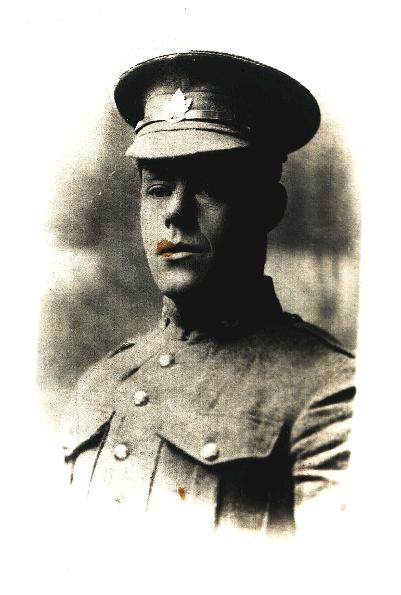
Tom Van Walleghem's grandfather, Pte. David Robertson Louden; a piper in the Mounted Band:
David Robertson Louden, was born in Cupar, Fifeshire, Scotland in 1881. He fought in the South African (Boer) War of 1898-1902, with the 2nd Cavalry, Fife Light Horse, in the British Army. After emigrating to Canada, he joined the Canadian Expeditionary Force to fight in The Great War, enlisting with the 1st Canadian Mounted Rifles January 13, 1915 in Brandon Manitoba.
Arriving in France in September 1915, he served as a Piper with the Battalion on the Western Front and was part of the 1st CMR Mounted Band. On April 16, 1918, during the fighting at Hill 70, David Louden suffered a gun shot wound to the right thigh and was removed from the battlefield. He was operated on and spent the next seven weeks convalescing in two different hospitals. Upon his discharge in June, he was posted to the 15th Reserve Battalion and later returned to his original Battalion, the 1st Canadian Mounted Rifles, on August 22nd, serving with them for the duration of the War. When the War ended, he embarked for Liverpool, England, March 12, 1919, subsequently returning to Canada, where he settled in Kelliher, Saskatchewan and took up farming.
David Robertson Louden passed away in 1965 at Winnipeg, Manitoba.

Acting Lance Corporal Reginald Marshall Hall (Reg. No. 910019), 196th Battalion, CEF. Taken on Strength with the 1st CMR on 27th April 1917, until diagnosed with trench foot at the end of October that year.
His grandnephew, David Ford of Brandon, has written up a detailed service history, an abridged version of which will be posted here shortly.

Sarah Haines is a cousin of Lt. John Wesley North, KIA at St Olle 29th September 1918. She has some 1st CMR and family photos (coming soon), and says:
"...'Jack' is technically my first cousin 3 x removed. To make sense of that, he's my great grandmothers cousin. He had a close relationship with my grandfather too, who would have been a young boy when Jack was visiting him in Ireland during the war and he made a great impression on my Granddad, he talked about "cousin Jack" right up until his death, I guess he saw him as a bit of a hero..."
In the Field
4 -11 -18
Dear Mrs McCay,
I have just had your letter dated October 22nd with reference to your Cousin Lieut. J.W. North & it is my very sad duty indeed to confirm the bad news. Your cousin Lt North was killed in action by an Enemy's Machine gun fire on the morning of Sept 29th during the attack on Cambrai. The Battalion was advancing to the attack on the morning of the 29th when it came under heavy machine gun fire, & at the time of his death Lieut North was leading his men forward in his usual brave and cheery manner when he was struck by the bullet & killed instantly. He was invaluable as an officer & his bright cheery ways made him the very man to lead others through bad places which he did always with great skill and energy. Lieut North was very much liked by his brother officers & simply adored by the men of his platoon, he was always ready to lend
2/
a helping hand & never asked anyone to do, that which he could not do himself. I might say as his commanding officer that he was one of the most likeable fellows that ever I knew & we all feel his death very much. He is buried in the North British Military Cemetery. Grave 31 – Row A – Plot 1 – near St Olle on the outskirts of Cambrai & a suitable cross has been erected marking his last resting place. In finishing I would like to extend to you the heartfelt sympathy of myself & all ranks in the Battalion in your sorrow.
Believe me
Yours very sincerely,
Burnett Laws Lt. Col.
Commanding 1st C.M.R. Bn.
P.S. Please excuse the paper and pencil as I have none other available.
Raillencourt village was captured by the Canadian Corps on 28 September 1918, in the Battle of the Canal du Nord. The extension to the communal cemetery was made by the Canadian Corps after the capture of the village. It was enlarged in 1923 when graves were brought in from North Cemetery, Raillencourt, which was situated between Raillencourt and Cambrai, behind the houses of St. Olle. It was made by the 8th Infantry Brigade and named for Lieut. John Wesley North, who was buried in it. It contained the graves of 67 Canadian soldiers, 63 of which were men from 1st Canadian Mounted Rifles, and five others. (www.ww1cemeteries.com/)
Below: Burnett Laws; O.C. (Officer Commanding) from April 24th 1918 - Demob. Felicity Laws and I are guessing this may have been taken around the time of his wedding on 25th September 1918 to Elsie Gertrude Corah at All Saints Church, King's Heath, Worcestershire; just south of Birmingham.
Four of his seven brothers were in uniform. At least two were with him in the 1st CMR: Lt. Gerald Laws; and Sergeant Alan Laws, see below.
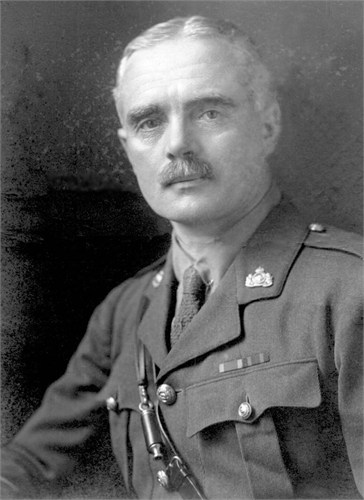
From: 'Pioneers and Prominent People of Saskatchewan', 1924. Pages 208/209
LAWS: Colonel Burnett, D.S.O., Croix-de-Guerre., - farmer, Lloydminster. Came to Canada, 1899, to Regina. Joined N.W.M.P., April 10th; stationed various posts. Was at Fort McLeod, when he joined the expeditionary force for South Africa, ?
The following is an extract from a letter sent to a friend by a brother officer, Major Laws :
“I am indeed pleased to be able to tell you something in connection with the death of Major B. Ker Thomson. Major Thomson was killed on the morning of September 20th, 19 16, at Mouquet Farm while in command of his Company in the front line. I should like to add it was while in No-Man’s-Land fighting with, as usual, conspicuous bravery to rescue some of his wounded men that he was killed. With, as always, a total disregard to his own safety he went out in the face of a hail of machine gun and rifle fire just as calmly as if on parade to try and bring in some of his own men, who had been wounded in our attack on the German trenches that morning. It was while so employed he received his death wound. Major Thomson had made himself a great favourite with both his brother officers and men—by his never failing cheerfulness and good-nature—by his great courage and coolness under the heaviest fire. His death is a great sorrow to his friends and also a very great loss to the Battalion. There are only four of the original officers of the Battalion left with us at present. Our losses have been very deadly since we came here, and the Regiment at present is very nearly new. It has given me a very great pleasure to have been able to write and tell you how gallantly Major Thomson met his death. If he had lived he would certainly have been mentioned for great honour, and though dead, he will always be remembered by those of us who may be left, as a very gallant gentleman and soldier, who died trying to save his wounded with a total disregard of self. I am very proud to have been his friend! I am glad to have been able to tell you how bravely our Major died.”
http://uccremembers.ca/old-boy/major-burns-ker-weld-thomson-99/
From Cole Wilson in Saskatoon:
Private Frederick Percival Cole, 911001 from Wolseley, Sask. Born 7th January 1895, KiA Passchendaele 26th October 1917, aged 22. Menin Gate (Ypres) Memorial, Belgium.
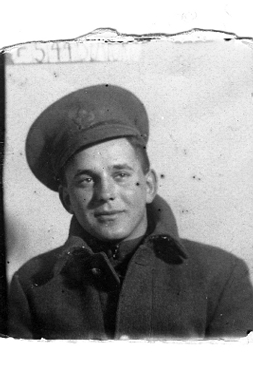
and: (911001Pte.F.P.Cole) According to his obituary he had recently joined the bomb section of his battalion. This picture was taken Oct 13th, 1917. According to the war diary they were in Camblain L'Abbe where they took part in specialist training in a.m. (Lewis Guns in front - WW1 LEWIS AUTOMATIC MACHINE RIFLE).
Another, much clearer, copy of this has surfaced in Brandon, identifying the building as Chateau de la Haie, and 4th from right, back row, we think is 910019 Acting Lance Corporal Reginald Marshall Hall. (Thanks, SuperDave). Standing on Pte. Cole's right (3rd from left) is Pte. Odin M. Olson, 719037. (From his grandson, Terry Hughes)
From Greg Clark's 'Fifteen Years' - "Chateau de la Haie was just north of Villers au Bois.
It was a great, squat chateau standing amidst park ground, with walls and a gate letting into a stately drive under tall elms.
It used to be Madame Patti’s country estate.
But then we came along and made it a divisional headquarters, with hundreds of Nissen huts, those round-roofed tin huts, in the park, and staff cars and motorcycle dispatch riders tearing in the gates and brass hats embarrassingly numerous.
The last snapshot any of the boys have seen of the Chateau de la Haie showed the poor old gates fallen ajar, grass growing rankly in the entrance, and through the tall trees, the chateau standing and lonely within."

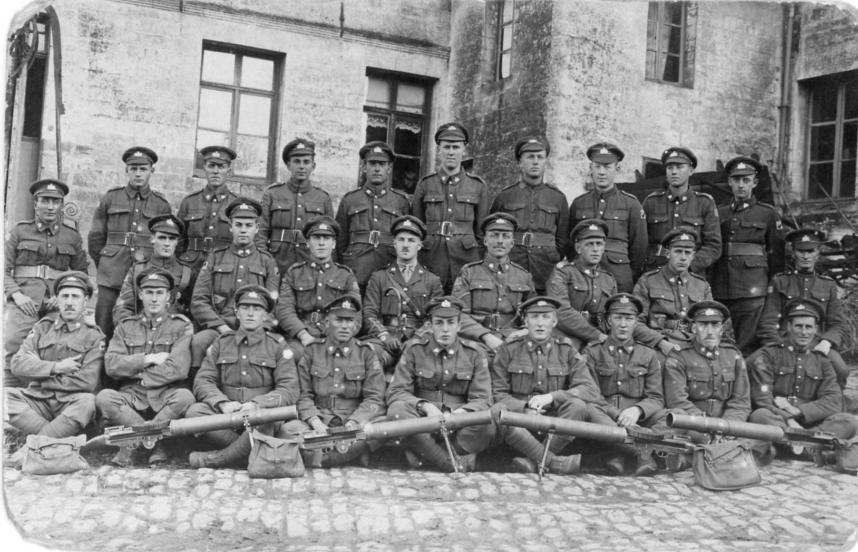
From Wayne Colton, Brampton, Ontario: I had two uncles that served in the 1st Canadian - Private Alexander Porter (b.26th March 1891): Regt. No: 7825. Killed in Action 2nd June 1916 at Sanctuary Wood, aged 25 (CWGC says 22). Son of Mrs. Elizabeth Porter, 9 Geoffrey Street, Belfast, Ireland. Menin Gate (Ypres) Memorial Panel 30 & 32.
(Wayne - please resend these photos. They were stored on the original message system that closed. My apologies! Pete.)

and Richard Harrison (b. 21st June 1892): 1st Canadian Mounted Rifles - Service number 7775. Both joined in Toronto, attesting on February 5th 1915.

Major Charles Donald Livingstone (16th September 1873 - 12th October 1916) died in the arms of his fellow officer, Major George Howard Bradbrooke. His final words as reported by Bradbrooke: "Well, I'm done. I've done the best I can for 'B' Company. Write to Father." He was hit by shell fire while standing in the front line trenches north-west of Courcelette. Four brothers served in the Great War, three of whom -- Hugh, Charles and David -- died, each of them at famous places in Canadian Great War history: Hugh died of wounds at Ypres, Charles was killed in action at Courcelette, David KIA at Cambrai. The sole survivor was Rod. Charles pictured in a lieutenant's uniform, 1st Canadian Mounted Rifles. From relative Alan MacLeod.

William John McLellan (b. 6th December 1894) pictured in 1916, nicely showing the 1st CMR distinguishing patches - Red circle above French Grey square (3rd Division) in roughly stitched-on wool. A Lance-Corporal stripe below. See 'Links' to his many letters.
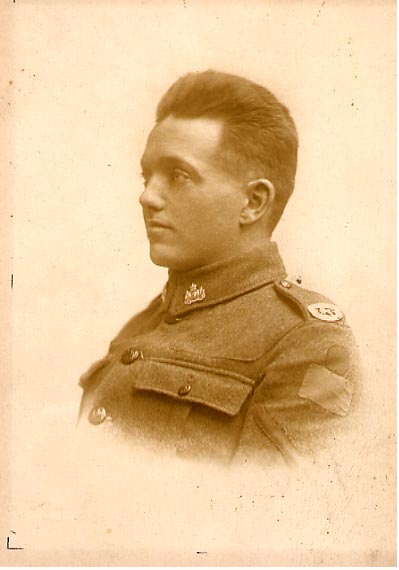
Major Walter Buchanan Caswell, was born on August 11, 1889, in Cochrane, Alberta. He was the son of Robert W. and Frankie Caswell, two of Saskatoon’s earliest pioneers. His father was also an alderman. The family moved back to Saskatoon about 1893, and he took his grade schooling here. He is listed as a law student at the University of Saskatchewan in 1914, but graduated in law from Manitoba College. He enlisted with the First Canadian Mounted Rifles in 1914 and served in France. He was awarded the Military Cross for distinguished service at the Battle of the Somme in the summer of 1916. In September 1918 be volunteered as part of the allied intervention in Russia with the Canadian Siberian Expeditionary Force. His name is inscribed in the memorial at the College Building at the University of Saskatchewan in recognition of his service (first floor, centre west).
Caswell returned to Saskatoon in 1919 and established the law firm of Miliken and Caswell. He was first elected to City Council in December 1934 and was re-elected five times, serving from 1935-1946. He was a member of the Cosmopolitan Club and of the Saskatoon Club, where, on March 25th, 1950, he suffered a cerebral haemorrhage, collapsed and died. He was survived by his wife, Mary (nee McWilliams) and their daughter, Carol Ann. He is buried in Woodlawn cemetery.
https://www.newspapers.com/clip/107922734/obituary-for-walter-buchanan-caswell/
https://www.findagrave.com/memorial/64896903/walter-buchanan-caswell/photo
From: 'A Seat on Council. The Aldermen, Councillors and Mayors of Saskatoon 1903

Linda Hodgkin has been in touch about her Great-Grandfather, the O.C., Lt.-Col. R.C. Andros (in command 3rd June 1916 - 24th April 1918), and is about to start some research. The flickr photos got the following response from Bruce Gordon:
"...I stumbled across your Flickr site while researching my grandfather’s WW1 memoirs which I’m preparing to privately publish for my family and publicly release shortly. I noticed you have a picture of the 1st CMR including Colonel Ralph Andros. My grandfather was Major Edward James (Jim) Ashton of the 32nd Battalion, and knew Ralph back in Canada and mentions him in his memoirs as well as a few stories about him from back home..."
[By kind permission of Bruce Gordon; an extract from Jim's long and wonderful memoir, with some entertaining anecdotes about a C.O. with a good sense of humour!:]
“...Convalescent Leave.
I was discharged from Ramsgate in September, [1916] and given leave prior to final English medical board and return to Canada. I spent a day or two in London before going to Louth for the balance of my leave. During this stay in London I planned to see a number of places I had always meant to visit and like many others who could get to London fairly easily, had so far neglected seeing. Again I did not get very far with my plans. I had lived for over a year, just across the river from Westminster Abbey but had never been inside it. Just as I was starting out to visit it, I met an old friend of mine, Col. Andros, so we went to look over the Abbey together. I had not realized how interesting the visit could be, or that the morning hours I was to spend there would be too short a time to begin to look over its interesting places. Every inch of it teems with items of historic importance as every English King except Edward V and Edward VIII had been crowned there. The coronation chair was used by Plantagenet Kings, while Celtic Kings of Scotland were crowned centuries earlier on the stone of Scone, which is beneath its seat. Tradition says that this stone was part of Jacob’s pillar at Bethel. Many English sovereigns are buried there, as are also many of their most famous subjects, and the Unknown Soldier. Several chapels, all of great interest are attached to the Abbey. There are also the cloisters and the Chapter house, the crypts and many other places well worth a visit. We joined a party an old verger was showing round that morning. He was a typical cockney, and his a less description of points of interest, which it was quite evident he loved dearly, was both intriguing and interesting. The dust and the verger proved too much for Ralph Andros, and when about noon we were near the north door of the Abbey, he insisted we adjourn to a nearby pub, which was just opening, to wash away the taste of the dust and anticipation in a bottle of Bass’ ale.
I wandered round Wren’s masterpiece St. Paul’s Cathedral during that short stay in London, and wished that its surroundings did not prevent me from getting a good look at it. When I return to London next I shall certainly pay another visit to St. Paul’s now that German bombing has cleared sufficient space round it to permit a real view of it. The different Art Galleries, the Museums, and many other points of interest had to await a later return to London, and I have yet to visit the Tower.
Col. Andros was in command of the 1st Canadian Mounted Rifles at the time. He was just back on leave after the steady fighting on the Somme, in which his Battalion had taken part. He was very enthusiastic about the possibilities that tanks, which had first been used a few days previously, afforded of controlling the enemy’s machine gun fire, which the Germans had used with such devastating effect to slow down and stop British offensives since the early days of the war. Though they undoubtedly gave the Germans a scare, mud, slowness, lack of replacements, and inexperienced handling, combined to rob Britain of any decisive results and about the only real gain was experience in the use of the weapon, which was to count in the latter days of the war.
The Colonel was an able soldier with a keen sense of humour who did not hesitate to speak his mind, almost regardless of consequences. Born in India in 1871, he came to Canada as a young man and served a term in the Royal North West Mounted Police, then learned the ranching business spending some time near [Fort] Benton, Montana, when that town was the rallying point of a large group of roistering, hard bitten, hard riding, and quick shooting American cowboys, whose like are not seen today. When I first knew him he was living near Weyburn, breaking in and selling the horses raised on the Andros and Livingstone ranch near Willowbunch [Sask.] They specialised in draft animals, and as there was an almost unlimited sale for them, they were doing very well, and Andros was able to retire to Victoria shortly after he was forty. A slight, outspoken, direct action man, numerous tales were told of his unorthodox methods of handling a situation. As a young man in Benton, Montana he had moved in a group where boisterous behaviour was almost the rule at convivial gatherings. His wife objected to that kind of pastime and Andros avoided that type of gathering. A group of men on a fall shooting party were enjoying a convivial evening at his Willow ranch and as the evening progressed kept asking him to enter into the fun with them. Late in the evening he did and after a drink or two danced a can-can on a table in his birthday suit to their delight. Delight changed to concern when he rushed outside, as it was snowing at the time. He ran to a haystack, covered himself with hay, and waited till they were all away from the ranch house in search for him. Then went back and got into bed. Presently a very worried group of men began to return. I don’t know what happened when they found him but Andros told me years later that they never attempted to make him the life of the party again.
We were dining with two ladies at [a ?ectt’s / (Thomas) à Becket's?] restaurant one evening. Andros, whose voice was very penetrating was taking a very active part in the conversation, so much so that we were drawing the attention of neighbouring diners to our table, somewhat to the embarrassment of our guests. I suggested he modulate his voice as our table was receiving undue attention. Looking around he saw a man a couple of tables away half turned in his seat and gazing at him. Andros immediately rose went over to the man and said to him:- “It appears from the attention you are paying to my conversation that you should know me, unfortunately, I don’t remember you. My name is Andros.” It was a confused looking gentleman Andros left when he returned to our table. We had an interesting day or two together, but saw no more historic sights after our visit to Westminster Abbey...” Jim Ashton 1950.
R.C.Andros below.
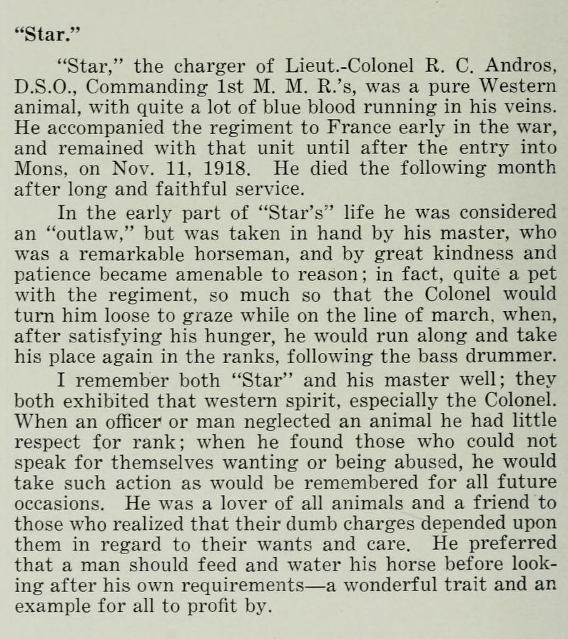
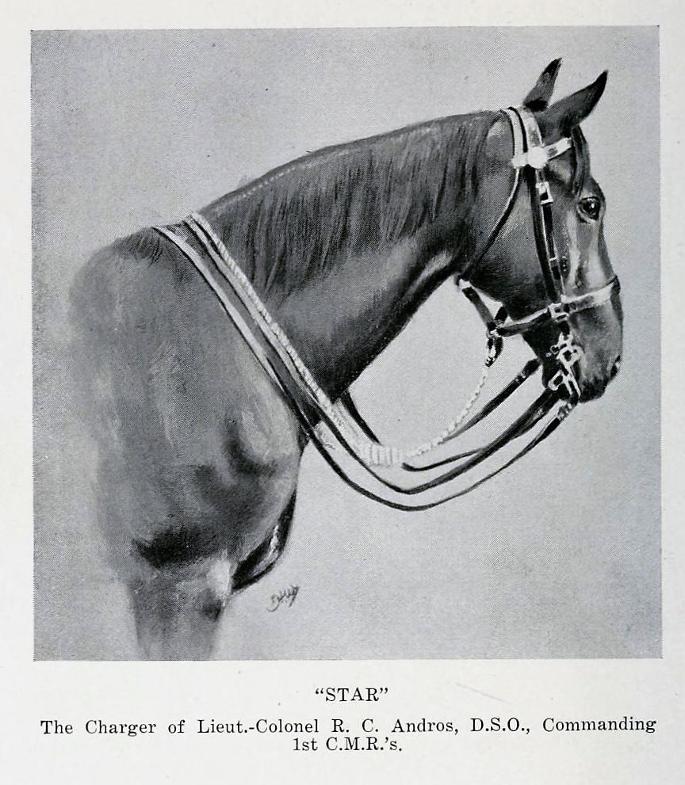

__________________________________________________________________________________________________________________________________________
(From Michael O'Hagan; great-grandson of Sidney Proven, Harry and Ernie's brother).
Harry Proven enlisted with the 45th Battalion on January 30th 1915, and went overseas in March 1916. He arrived in France in June and was transferred to the 1st CMR. He worked his way up through the ranks and was promoted to Sergeant in October 1917. He died on September 29th 1918, from a penetrating gunshot wound in the chest. He was buried in a small cemetery in the village of Queant.

Ernest Proven, or Ernie, enlisted on March 18th 1916, in the 107th Overseas Battalion. He arrived in France in late 1916 and was transferred to the 1st CMR. He was wounded at Vimy Ridge, evacuated to hospital, and died of his wounds on April 12th 1917. He is buried in Boulogne-sur-Mer.
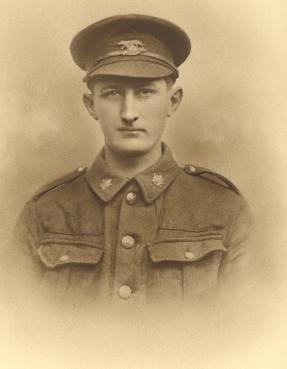
A 1st CMR group postcard. All these men had grown up near Clanwilliam. Probably taken between January and April 1917, as Harry is pictured as a Lance Corporal.
Back row: Ernest Proven; Harry Proven; Fred Minns; Herman Klemet. Front row: Nelson Graham (of the six, the only survivor); Hugh Robert Sanderson (names mixed up on photo).

Roger Peachey was born on October 19, 1892, in London, England. After finishing his schooling he took clerical training. Shortly thereafter, he emigrated to Canada and Alberta, where he put his talents to work.
At the outbreak of World War I, Peachey enlisted in the 3rd Regiment, Canadian Mounted Rifles on January 7, 1915, at Medicine Hat, Alberta. He trained in Canada and England and landed in France on September 22, 1915. After nineteen months in the field, he was recommended for a commission, and attended Officer Training Course at St.Omer in France and Bexhill in England.
After training, Lieutenant Peachey returned to France and saw action until August 8, 1918, when at Hangard, leading a party of scouts and snipers of the 1st Battalion, Canadian Mounted Rifles, he suffered severe hand grenade wounds. He spent a month in hospital at Rouen, before being allowed to return to England for further recuperation. For this action, he was awarded the Military Cross on October 7, 1918. During his three years service in France, he was wounded twice, lost a leg as a result of his wounds, and saw action in all the major campaigns of the War, including Vimy Ridge. Lieutenant Peachey was invalided back to Canada on May 21, 1919, and given his final discharge papers in Victoria on October 21, 1919.
On May 12, 1920 Roger Peachey joined the Headquarters staff of the British Columbia Provincial Police Force as a Clerk/Constable under Corporal W.J. Voisey, the head of the newly created Criminal Identification Department.
Roger Peachey was commissioned into the Force in 1936 and four years later became the head of the Criminal Investigation Branch. Once head of the Branch, he improved its stature to the point where it had (for its day) the best photographic and fingerprint technology, an up-to-date firearms registry, a modus operandi section, and top quality specialists in ballistics and other sciences available for police investigation work.
During the Second War, Deputy Commissioner Peachey was a member of the Joint Services Security Intelligence Board. Its principal function was to co-ordinate the work of the tri-services and the police forces in preserving the security of Canada’s Pacific Coast. This work was over and above his police work.
ADDENDUM:
British Columbia Provincial Police Promotion Record of Roger Peachey:
First Appointed to the Force May 12, 1920, Victoria, Clerk/Constable
1/4/24 Appointed First Class Constable
1/4/26 Appointed Acting Corporal I/C
1/4/27 Promoted to Sgt. Criminal Investigation Branch, Victoria
1/4/30 Promoted to Staff Sgt.
1/4/36 Promoted to Sub-Inspector
1/8/40 Promoted to Inspector
1/11/47 Promoted to Deputy Commissioner
1/3/50 Promoted to Commissioner
15/8/50 Discharged from the Force. B.C. Provincial Police taken over by the Royal Canadian Mounted Police on August 15, 1950
(From: R.G. Patterson, curator with the Modern History Division, British Columbia Provincial Museum.
British Columbia Historical News Pages l7 & 18, Volume 19 No.2 1986.)
106217 BRUCE WELLINGTON FAIRBAIRN A bright young lad of nineteen years, Bruce Fairbairn left his home in Camden, Ontario to seek his fortune in the West. He was performing homestead duty in Saskatchewan at the outbreak of war. As soon as he could manage his business affairs, he quit the farm and joined the 1st Canadian Mounted Rifles at Yorkton. He sailed with his regiment in May, 1915, and trained for four months in England before he was sent to France. The winter of 1915-16 was one of great hardship for the men in the trenches. Corporal Fairbairn was strong and rugged and was in every respect an ideal soldier. He cheerfully did his duty, and was always ready for any venturesome undertaking. He was known to have fought valiantly with his company at Sanctuary Wood, where they were engaged with the enemy on the 2nd of June, 1916. After the engagement he did not answer to the roll call and few of his immediate companions survived the battle. No information concerning him was obtainable, and he was reported missing, and later on was officially reported dead.
106010 WILLIAM ROY DAVEY was born in North Dakota, of Canadian parents who, when he was still a babe, returned to their native county on the old Davey homestead, at Wilton. When he was seventeen years of age, the family went West again; but this time to Central Saskatchewan, where Will became one of the most progressive citizens of the district in which he lived. He took a deep interest in the welfare of the community, particularly in the schools, and when a teacher could not be procured he took charge of the school himself for months at a time.
As soon as he saw that the war was likely to be a bitter and protracted one, he began to put his affairs in order. He enlisted in December 1914, in the 1st Canadian Mounted Rifles, and landed at Plymouth on June 30th, 1915, the first of his family to set foot in England since his grandfather, ninety-nine years before, sailed for Canada from the same port. He went to France with his unit in October, and for over two years he did his part in keeping the enemy at bay, and in January 1918, was invalided to England. Upon being discharged from the hospital he declined an opportunity to join a non-combatant unit, but was transferred to the 8th Battalion of Winnipeg, otherwise known as the Little Black Devils. July found him back in the trenches again, and for the next three months he fought with a lighter heart, for it was evident that the enemy was at last overpowered, and the final victory was not far removed. A comrade-in-arms wrote of him that he was an exellent soldier and absolutely without fear and volunteered for the most hazardous undertakings. His last five nights on earth were spent scouring No-Man's-Land for intelligence of the enemy's movements and position and in so doing, the scouting party frequently crawled to the very parapet of the German trench. After having spent the night upon such an expedition he was resting in his dugout on October 15th, and came out to make a pot of tea, when he was struck by a shell and instantly killed, and was the last one of his battalion to fall in battle.
(THE WAR WORK OF THE COUNTY OF LENNOX AND ADDINGTON, 1922)
He was born January 2nd 1888 in Hamilton, North Dakota to Henry William and Emma Davey (later of 152 Sutherland St., St. James, Winnipeg), and died aged 30 on October 15th 1918. Buried Vis-en-Artois British Cemetery, Haucourt, Pas-de-Calais. Active Militia on attestation: No.10 Coy C.A.S.C. [Canadian Army Service Corps] "B" Squadron, 4th Hussars, Canada. Inscription on headstone: "SWEET MEMORIES BRING TO HIM WE LOVE"